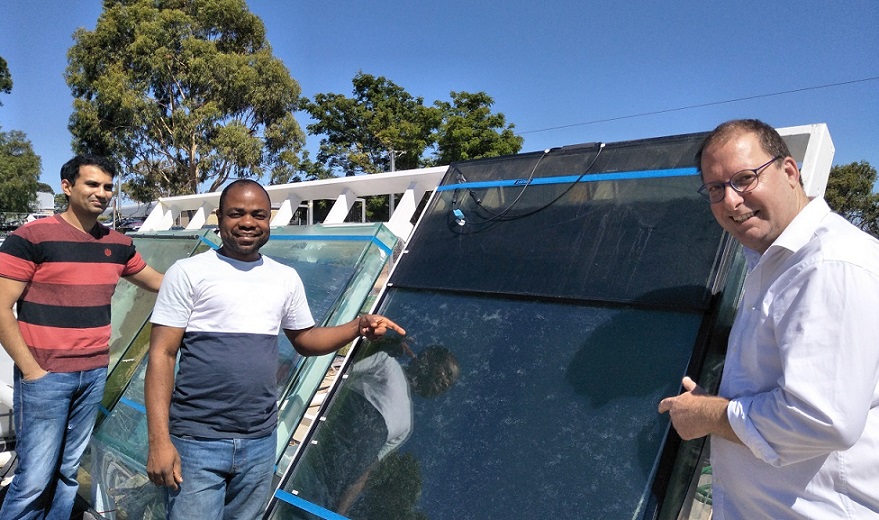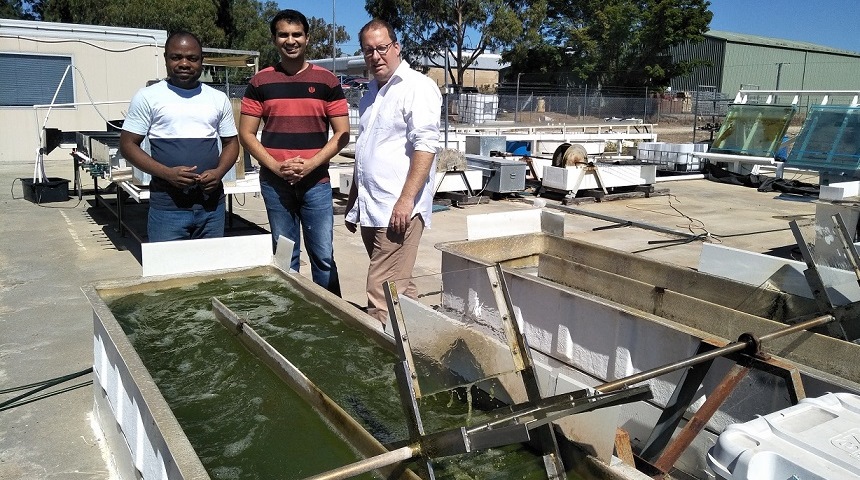
Murdoch University researchers have shown that solar control films traditionally used on windows may be the most efficient way to cool down photobioreactors.
Designed to transform microalgae into alternative energy sources, photobioreactors are enclosed structures that heat up very quickly when housed outdoors.
The researchers, from Murdoch’s Algae Research and Development Centre, have been investigating the industrial potential of microalgae for several years, particularly those that can be grown using salty, or waste water.
Microalgae, the microscopic-sized relatives of seaweeds, have the potential to become a large-scale alternative fuel source, possibly replacing crude oil and its by-products in the transport, food, agriculture, and wastewater treatment industries.
The organisms can be cultivated both indoors and outdoors and the products converted to biofuels, animal feed, food additives, or fertilisers.
Technologies for microalgae farming are usually based on open pond systems or closed photobioreactors. Open ponds have been preferred in the commercial cultivation of microalgae due to lower capital and operating expenses but can only support the growth of a handful of microalgae species.
Photo-bioreactors (PBR) have several advantages over open pond systems, including minimising the potential for contamination from toxic organisms or birds and other animals. The enclosed systems can be installed as modules at abattoirs, farms, and other industry sites to convert waste products to marketable commodities.
Outdoor units prone to overheating
However, outdoor PBRs are prone to overheating, leading to death of the culture. Traditionally, this problem is solved by running fresh water on the face of the reactor to cool it down, prompting Murdoch researchers to look for less water intensive alternatives.
Dr Damian Laird, who took part in the research published in the Biochemical Engineering Journal said although photobioreactors were quite efficient, thousands of litres of water were traditionally used to cool the structures, proving both expensive and wasteful, while reducing overall efficiency.
“We are examining how we can change the materials that a bioreactor is made from to prevent overheating,” Dr Laird said. “Adding a solar control film that blocks infra-red radiation entering the PBR is a simple, elegant solution that has not been previously applied to microalgae farming.
“With our collaborators we are also investigating PBRs constructed of insulated glazed panels that actively block and capture unwanted infrared and ultraviolet light and converts that into electrical energy”, Dr Laird said.
”An innovative microalgal photobioreactor that requires less, or no, freshwater for cooling purposes would be a game-changer.”

Researchers Emeka Nwoba, Ashiwin Vadiveloo and Damian Laird at the Algae Research and Development Centre
Dr Laird said while this early research by PhD student Emeka Nwoba showed that the use of solar control films on photobioreactors could significantly reduce the water and power requirements for commercial microalgal cultivation, further studies under outdoor conditions were required and were underway. This will test the long-term suitability of the proposed systems for the cultivation of multiple microalgal species.
CITATIONS:
Parlevliet, D., Moheimani, N., (2015) Potential of Converting Solar Energy to Electricity and Chemical Energy,In: Biomass and Biofuels from Microalgae: Advances in Engineering and Biology, Springer, pages 311 to 329.
Vadiveloo, A., Moheimani, N., Alghamedi, R., Cosgrove, J., Alameh, K., Parlevliet, D., (2016), Sustainable cultivation of microalgae by an insulated glazed glass plate photobioreactor, Journal of Biotechnology, 11, 3, pages 363 - 374.